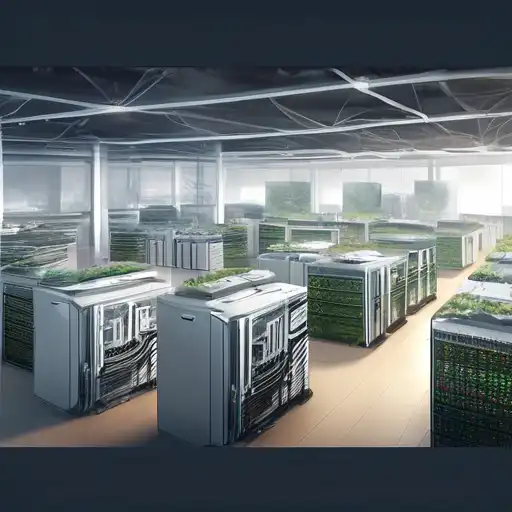Introduction to Sustainable Hardware in Tech
In today's rapidly evolving tech landscape, sustainability has become a cornerstone for innovation. Tech companies are increasingly turning towards sustainable hardware solutions to reduce environmental impact while maintaining high performance. This shift not only addresses the growing demand for eco-friendly products but also aligns with global sustainability goals.
Why Sustainable Hardware Matters
The tech industry is notorious for its significant environmental footprint, from energy consumption to electronic waste. Sustainable hardware solutions offer a pathway to mitigate these impacts by incorporating energy-efficient designs, recyclable materials, and longer product lifecycles. These practices not only benefit the planet but also enhance brand reputation and customer loyalty.
Key Features of Sustainable Hardware
Sustainable hardware is characterized by several key features that set it apart from conventional options:
- Energy Efficiency: Designed to consume less power without compromising performance.
- Recyclability: Made from materials that can be recycled or repurposed at the end of their lifecycle.
- Durability: Built to last longer, reducing the need for frequent replacements.
- Low Environmental Impact: Manufactured using processes that minimize pollution and resource depletion.
Examples of Sustainable Hardware Solutions
Several tech companies are leading the way in sustainable hardware innovation. For instance, modular smartphones allow users to replace individual components instead of the entire device, significantly reducing e-waste. Similarly, servers and data centers are being designed with energy efficiency in mind, utilizing renewable energy sources and advanced cooling technologies.
Benefits for Tech Companies
Adopting sustainable hardware solutions offers numerous advantages for tech companies, including:
- Cost Savings: Energy-efficient devices reduce operational costs over time.
- Regulatory Compliance: Helps companies meet increasingly strict environmental regulations.
- Competitive Edge: Differentiates brands in a crowded market by appealing to eco-conscious consumers.
- Innovation Opportunities: Encourages the development of new technologies and business models.
Challenges and Considerations
While the benefits are clear, transitioning to sustainable hardware is not without challenges. Higher upfront costs, limited availability of materials, and the need for consumer education are significant hurdles. However, with strategic planning and investment, these obstacles can be overcome.
Future Trends in Sustainable Hardware
The future of sustainable hardware looks promising, with advancements in biodegradable materials, solar-powered devices, and AI-driven energy management systems. As technology continues to evolve, so too will the opportunities for creating more sustainable and efficient hardware solutions.
Conclusion
Sustainable hardware solutions represent a critical step forward for the tech industry. By prioritizing environmental responsibility, companies can not only reduce their ecological footprint but also unlock new opportunities for growth and innovation. The journey towards sustainability is a collective effort, and every step counts.
